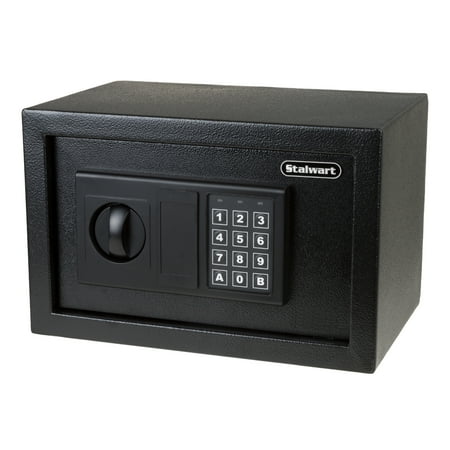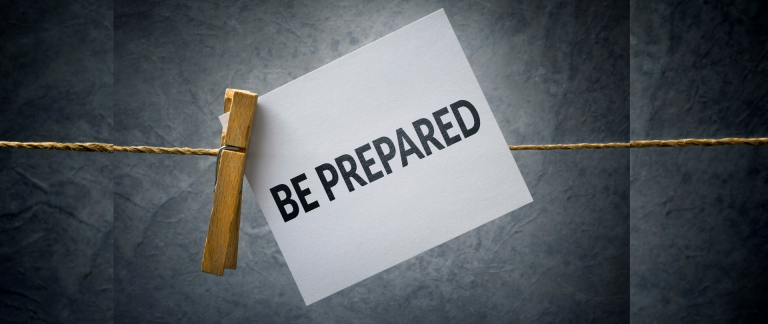How To Organize Papers & Get Your Clutter Under Control
If you want to be successful in life, it’s important to be organized, especially when it comes to paperwork. Doing life well requires learning how to properly obtain, tracking, storing, and even properly destroying highly important or sensitive documents. But if your papers are in chaos, you’re likely to miss or misplace important documents. The first step in being responsible with paperwork is learning how to organize papers.
We’ve actually tried out quite a few methodologies and strategies: Marie Kondo, tickler files, filing cabinets, hanging folders, paper baskets, and so on. We’ve finally found an awesome strategy that optimizes both your time and your space. Read on for our tips.
How To Organize Papers At Home
For the first step, we’ll take our cue from Marie Kondo. In organizing anything, one of the first steps she recommends is gathering all of your items together. So in this case, it means gathering all of your paperwork wherever it may be. Go to your desk, dining room table, the coffee table by the front door, yes, even the ones on the fridge, and whatever you have stored currently as well.
Next, set up your staging area. Where do you want to settle in and go through all of this? Pick somewhere comfortable for the task and well lit. You may want to pick your spot before gathering your papers, but it’s a little risky, as you may not properly anticipate all the space needed. Make it pleasant. Grab a beverage, light a candle (away from the papers!), and put on some good music.
Third, start sorting papers or folders as follows. (If anything is already sorted, you won’t need to pull out individual papers, just leave the papers in the groupings or folders you already have them in.)
Important Papers – these are going to be papers you need to keep for 7 years or more. So your birth certificates, old tax records, legal documents, warranties, etc.
Annual Papers – There are papers you need to use in the coming year at some point or need to keep for about a year before discarding or moving to long term. So that might be this year’s tax documents, information relevant to school for your kids, etc.
Reference items. Put everything here that you need to check or use at an indeterminate time. So for me, this is manuals, magazines, coupons, receipts, and personalized information – such as test results, medical records, etc.
Sentimental. These are the items you are keeping only because they have some personal meaning for you. So this is where you would put your cards, letters, kids’ artwork, etc.
Discard. If you follow Marie Kondo her rule of thumb is to “discard everything.” Of course, if you did that already, you wouldn’t be here reading this right now. All that to say, it pays to be aggressive when you declutter. Keep in mind that most manuals and many other items can be looked up or reprinted if needed.
Now that we’ve tackled the big pile, it’s a good idea to deal with each category of papers differently. Our suggestions for what to do with each group are below.
How To Organize Important Papers

Even though you may have gathered all the papers you have, it doesn’t mean you have all the documents you need. Important papers is the only category we recommend adding to as you go.
Important Papers
Do you have all of your essential documents & do you know how to store them for safe-keeping? What are the essentials? We think the following are the most important papers.
Identification Documents
- Certified copy of your birth certificate
- Social Security card
- Health insurance information
- Medical records
- Passport, if you have one
- Driver’s license or government-issued identification card*
More Personal Paperwork
- Educational records
- Immunization / Allergy Records
- Vehicle registration / ownership papers
- Proof of vehicle insurance
- Credit reports – Even if they don’t have a credit history, it’s a good idea to run credit reports, to make sure their identity wasn’t stolen. Why not? It’s free.
Documents Foster Youth Need
Here at Finally Family Homes, we serve youth aging out of foster care.
Learn more about how Finally Family Homes is making a life-changing impact for aging out foster youth.
Far too many youths lack the essential documents they need to succeed. In order to access all the resources available to them after care, it’s important for foster youth to obtain additional documents.
If that’s you, read on. You have a right to your records. The American Bar Association recommends providing a young adult exiting the system with the following additional documentation:
- A letter including the dates that the youth was within the jurisdiction of the court
- A letter including a statement that the youth was in foster care, in compliance with financial aid documentation requirements
- Documentation of the youth’s health insurance or Medicaid
- Documentation of a health power of attorney for the youth
- Proof of the youth’s citizenship or legal residency
- Clear and age-appropriate written instructions on filing a petition for the youth to re-enter care, including a completed sample petition
- Clear and age-appropriate written instructions on the filing process for accessing their case file
- Death certificates of the youth’s parents OR Termination of Parental Rights orders
In addition, the American Bar Association recommends obtaining through a court order if necessary:
- The youth’s entire educational records
- The youth’s entire health and mental health records
If you are missing important documents or are having trouble tracking them down, the California Ombudsman for Foster Care website has a list of links to help you track them down.
How to Store Important Documents
After you’ve identified and gathered your important documents it’s time to organize them in an easy to find, but safe manner.
Safewise recommends putting each important document in a plastic sleeve to protect them from spills. They then recommend placing them in a safety deposit box, home safe (like this one at Walmart), or locked file cabinet.

It’s important to be prepared for the unexpected, too, especially if you are in an area that faces disasters – earthquakes, floods, fires, etc. You need a backup. You could go digital or you may also want to create a “go file.” To make a “go file,” make copies of your most essential documents and put them in a safe, but easy to carry container. I prefer plastic ones, which can help protect from water.
If you prefer digital or online storage, there are different risks, but you gain the advantage of being able to access your documents when you are away from home. The Leavitt Group has some great ideas on How To Digitize Your Personal Documents.
How to Dispose of Sensitive Information
You may find some important documents that you do not want to keep. Don’t just throw those in the trash or recycling. Any paperwork containing sensitive information requires proper disposal.
Safewise writer, Hillary Johnston, recommends using the shredder. ”At least once a month, shred your receipts, credit card offers, bank statements, expired credit cards, and utility payments you no longer need.
Don’t ever throw out a receipt that came from a transaction you used your credit card with, as your number and/or name is likely on there and criminals can use that to their advantage.”

Anything in your discard pile that isn’t sensitive can just about always be deposited in your recycling bin, which we recommend you have handy next to your shredder as you declutter your papers.
How To Organize Papers Without A Filing Cabinet
Filing cabinets are big, bulky, and rarely come in the exact size you need. This is why for the rest of the documents you plan to store, we think it’s best to stick with bins. They can be plastic or fabric or whatever you prefer. Just pick something easily transported and that you can downsize and upsize as needed.
While you can use the same style bins for each category, we’ve found that some bins work better for certain types of documents.
How to Store Annual Papers
As a reminder, your annual papers are papers you will either discard or put into important documents about once a year. For instance, you could keep all our tax-related documents there until it’s tax time. Once you’ve done your taxes, move them to the important documents bin.
For our annual papers, we really like using these stacking plastic storage bins. They allow you to keep them out of sight in the closet, but are also very protected.
Having all your papers separated by one box per category can also help you to find what you need much faster. Inside the bins, we prefer hanging file folders like these.
To make life even easier, be sure to mark the outside of the bin with the category of papers in it.
Gold Certified KonMari consultant Kristin DeCou, author of our article, How To Get Organized With Life Is Stressful, introduced us to these awesome chalk pens.
These dry erase chalk pens can write on plastic bins (and so much more), and also easily wipe clean when you need to make changes!
Storing Reference Papers

Because you are likely to be accessing your reference papers more often than any other category, you may want to store them differently. You want them easy to access. You could put them in a decorative folder or bin, so it looks nicer sitting on a counter or on a bookshelf. Or you can keep it in the closet too in the same kind of bin. It’s really about preference.
Weekly Papers
Wait, weekly? I know, we didn’t mention it. We recommend getting a box, though. This category didn’t come up earlier because almost nothing should go in there. This is essentially going to be your inbox that you go through, you guessed it, weekly. We recommend placing them directly into a box with no folders. You want to make it easy to throw papers in and tuck away. (We keep ours in the closet by the front door).
A Modification
If you really must, you can try out using two folders. One for coupons and one for high-priority items.
Because coupons are some of your quickest items to expire, you may want a coupon folder to go inside this weekly folder. This is to help remind you that you have them and to check them for expiration.
High-priority items should be filtered right away. If you get something super important, like a bill, we recommend throwing it right into a red folder, just so it stays separated and easy to spot as important.
How To File Kids Papers and Other Sentimental Items
Sentimental papers, under Marie Kondo’s guidance, belong with sentimental items, not paperwork, and we agree with her. It is unlikely that any other category of paper will touch your emotions as much.
As far as filtering them or figuring out what to toss, we recommend using her guidance as laid out in The Life Changing Magic of Tidying Up. And we don’t recommend doing it as part of your paper sorting day.
For now, and even later, likely, choose a large protective bin. Large, because sentimental items, especially kids’ art projects are rarely standard paper-sized.
We use this 64 quart clear plastic bin with a latching lid. It keeps our keepsakes secure and being clear -makes the box contents easy to identify. We still use the chalk marker on the side though, for maximum clarity.
Some Final Thoughts on Organizing Papers
Re-organizing paperwork can be overwhelming, so either carve out a large amount of time to really go through it all or take it in small chunks. But if you decide to “take it in chunks” schedule it and be consistent, otherwise you risk letting the pile of “to be organized” papers get too big.
Here are some other topics you may find useful.










